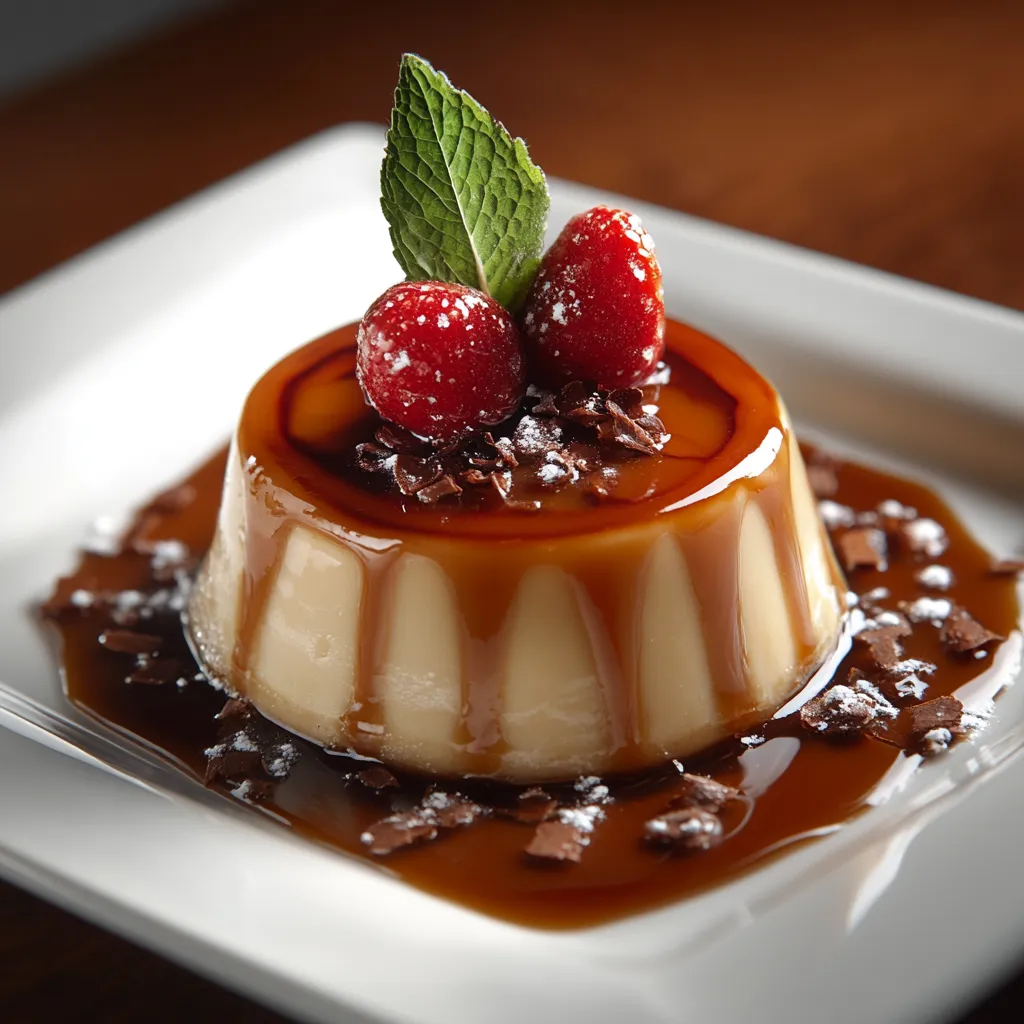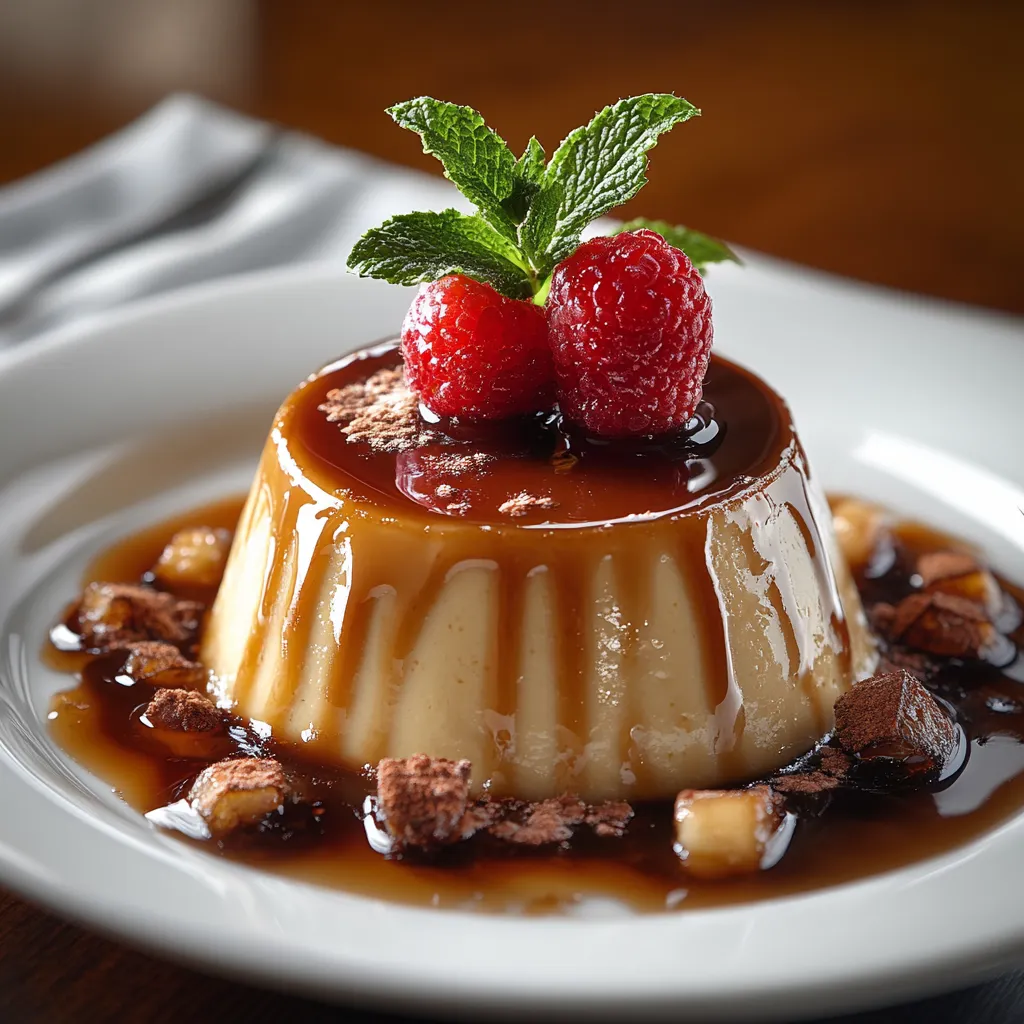 Save
Save
This restaurant-style caramel pudding brings a touch of elegance to any table while staying incredibly comforting and familiar. Smooth custard melts into bittersweet caramel for a showstopping dessert that comes together from pantry basics and a few careful techniques.
The first time I unraveled that perfectly set pudding onto a plate and watched the caramel sauce flow over the sides, my whole family gasped. Now we request this pudding for birthdays and special nights at home.
Ingredients
- Granulated sugar: adds sweetness as well as the foundation for a perfect amber caramel. Use fresh sugar without clumps for best melting results
- Water: helps dissolve the sugar for even caramelization. Filtered water gives you the cleanest results
- Lemon juice: optional but prevents crystallization for a pristine syrup
- Whole milk: creates a rich silky custard. Choose milk with the highest fat you can find for that extra creaminess
- Large eggs: thicken and bind the custard. Fresh eggs give the best set and subtle flavor
- Pure vanilla extract: lends gentle warmth. Opt for real extract instead of imitation for a natural taste
- Salt: just a pinch. Enhances sweetness while balancing caramel notes
Step-by-Step Instructions
- Make the Caramel:
- Combine sugar water and lemon juice if using in a dry saucepan. Heat over medium heat without stirring. Allow it to melt and bubble gently swirling the pan if needed until the mixture turns a deep amber color. Quickly and carefully pour the hot caramel straight into the bottoms of your ramekins. Swirl gently to coat the base and let set completely
- Prepare the Custard:
- Warm the milk in a separate saucepan just until you see steam but no bubbles. In a mixing bowl vigorously whisk the eggs sugar vanilla and salt until just blended and slightly frothy. Slowly stream the warm milk into your egg mixture whisking constantly so the eggs gradually temper and do not curdle. For the silkiest pudding strain this custard through a fine sieve into a clean container
- Assemble and Bake:
- Pour the strained custard over the cooled caramel in each ramekin. Set all filled ramekins inside a larger deep baking dish. Pour hot water into the outer dish until it reaches halfway up the sides of the ramekins forming a water bath. Bake uncovered at three hundred twenty five degrees Fahrenheit or one hundred sixty Celsius for forty to fifty minutes. The center should jiggle when lightly tapped but not be liquid
- Chill and Serve:
- Let the puddings cool fully at room temperature. Then transfer to the refrigerator and chill at least four hours or overnight for best flavor and firmness. To serve run a thin knife around the inside of each ramekin and gently invert onto plates. The caramel will cascade over the creamy custard
 Save
Save
My favorite part of this recipe is always the caramel. The aroma that fills the kitchen as it deepens and darkens brings everyone over to peek. My family loves gathering around waiting to see that moment when the pudding unmolds and the glossy golden sauce spreads across the plate.
Storage Tips
Store caramel pudding covered tightly in the fridge for up to three days. Puddings can be unmolded just before serving for best results or kept in their ramekins until you need them. Avoid freezing as the texture may turn grainy after thawing.
Ingredient Substitutions
You can use half and half in place of whole milk for even more richness. If you want a dairy free pudding try a mixture of coconut milk and oat milk for a creamy custard with subtle coconut flavor. For a variation whisk a touch of instant espresso powder into the caramel as it cooks for a coffee twist.
Serving Suggestions
Classic caramel pudding stands alone but also pairs beautifully with fresh berries or a dollop of barely sweetened whipped cream. If you want to elevate the look add a sprig of fresh mint or a delicate caramel shard beside each pudding. Serve on simple white plates to let the golden caramel shine.
Cultural and Historical Notes
Caramel pudding sometimes called caramel custard or flan is loved around the world from Europe to Latin America and Asia. Each country puts its own spin on the classic with slightly different proportions or flavors. At its heart though the magic is always the combination of rich eggs and milk and deeply caramelized sugar.
Recipe FAQs
- → How do I prevent the caramel from crystallizing?
Add a splash of lemon juice to the sugar and water mixture and avoid stirring once it’s heating. This helps maintain a smooth caramel.
- → Why is a bain-marie used for baking?
Baking in a water bath ensures gentle, even heat, resulting in a soft, silky custard without overbaking or cracking.
- → How do I achieve the smoothest custard?
Straining the egg and milk mixture before filling the ramekins removes any lumps and creates a perfectly smooth texture.
- → Can I use low-fat milk?
Whole milk gives the best creamy texture, but low-fat milk can be substituted. The custard will be lighter and potentially less rich.
- → Why should the dessert chill before serving?
Chilling allows the custard to fully set and lets flavors develop, making unmolding easier and enhancing the eating experience.
